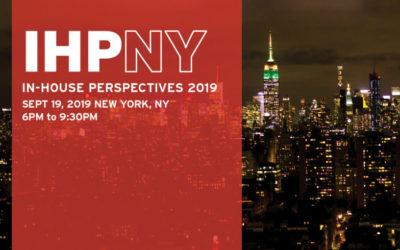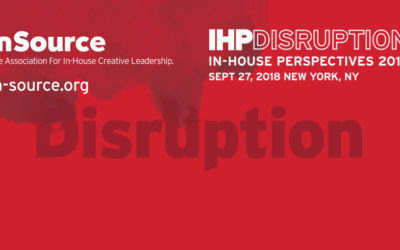Highlights from “Generating Ideas That Stick”
Creative professionals are acutely aware of the ongoing need to develop good ideas and communicate these ideas in compelling ways. However, it takes more than good ideas to achieve maximum business success. Creative teams must do their best to generate “ideas that stick,” which means ideas that “are understood and remembered, and have a lasting impact” to change the thoughts and behavior of the people who are the focus of one’s attention.
“Good ideas outnumber ideas that stick,” according to Dan Heath, co-author of a book published in 2007 entitled Made to Stick: Why Some Ideas Survive and Others DieMade to Stick and a consultant at Duke Corporate Education Duke based in Raleigh, North Carolina. His expertise includes helping corporate clients address real-life challenges by providing customized executive education.
Dan Heath was the featured speaker for a half-day InSource event held on Thursday, June 21, 2007, at SAS Worldwide Corporate Headquarters in Cary, North Carolina. His lively presentation explored some of the reasons (including fear, greed and lack of empathy) why people have good ideas that don’t stick, described the 6 principles of “sticky ideas” (namely, “simple unexpected concrete credible emotional stories”) and offered practical insights that in-house creative managers and their teams can use to generate and champion well-constructed ideas in the corporate environment.
Describing himself as an “idea researcher,” Dan started his remarks by sharing some of his observations in analyzing how individuals looking for their soul mates (“a high stakes pursuit”) describe their very essence with one-line “teasers” posted on an online catalog for singles. More effective than the blatantly ambiguous “Hey…” or “Looking for love!” are the more detailed descriptions, such as “Hand model turned doctor new to New York City” or “Athletic math nerd looking for someone to hum the Seinfeld introduction with.” In other words, when individuals narrow their focus and reveal more about themselves, the more they are able to distinguish themselves.
Applying the principle of concreteness (defined as allowing one to create a mental picture) is often missing in the way some businesses describe themselves. Consider this advertisement for a local construction firm: “Building is a series of communications, interactions and collaborations with a focus on creating the kind of synergy that produces extraordinary results.” Is this an idea that sticks? No. It’s pictureless and ambiguous enough to describe almost any business…in a way that will not “be understood, remembered, and have a lasting impact.”
“Fear keeps us from being concrete…because we don’t want to take the risk that people may refute or reject our message. That’s why we often resort to buzzwords,” Dan said.
To illustrate how creative managers can inspire their teams to move beyond the temptation of “greed” to overload target audiences with too much information, Dan led a group exercise to practice making a high concept pitch, as done in Hollywood circles. For example, the movie, Alien, can be described as “Jaws on a spaceship,” and the movie, Speed, can be described as “Die Hard on a bus.” Merging two concepts can help people quickly absorb an idea and make it stick. For this exercise, one person named a movie and another person named a form of transportation. Based on these two suggestions, individuals were able to generate interesting plot lines on the spot. Examples: “Hitch on a bicycle” was imagined as a bicycle delivery person having personal interactions with people and solving their problems, and “Moby Dick walking” was imagined as a global warming story starring a beached whale, as a sort of cross between An Inconvenient Truth and Free Willy.
The strategy: Put an anchor down (based on what others already know) and then pivot to another idea. This approach allows for easy visualization of a new concept. A classic example: the phrase, “horseless carriage,” was used in 1910 to describe the new invention of motorized cars; “carriage” was the anchor and then pivot to “horseless.”
A word of caution was given to beware of the dangers relating to The Curse of Knowledge. “The more we learn, two things happen,” said Dan. “The first is that we become more valuable; that’s a good thing. But the second thing is that the mental distance widens with those with whom we need to communicate. This leads to assumptions and jargon, making it impossible to imagine what others think as beginners who have not acquired the knowledge we have. The way to avoid this villain is to translate ideas in terms that others can understand and remember.”
This presentation by Dan Heath stimulated candid discussions among creative professionals attending this event. People were seeking advice on how to deal with others who do not embrace an idea as a great idea (“you can only control the communication of the idea; let them assess what you have in your brain and leave aside what you can’t control”); how to influence people to choose the sticky idea versus the inferior idea (“set up an experiment with 10 people to test the impact of idea A versus idea B; 1 week later, the sticky idea will be the one that is remembered”); and how to build consensus when the first reaction is “we can never use this idea” (“take a step back and articulate the definition of success; when agreement is reached on defining success, suggest a test of the ideas and move beyond the ‘my opinion versus your opinion’ approach”).
It was noted that all 6 attributes of “stickiness” are not required to be characterized as a sticky idea, but “the more, the merrier,” recognizing that a natural tension exists between “unexpected” and “credible” when overdone. Special attention was given to the pitfalls of implementing business-to-business marketing materials without adequate attention to emotions and “tapping into things that make people care.” For example, the Case Study can be a useful tool for articulation of the facts, but “a real Case Study has pain (for example, internal inertia and resistance) in it.” Make the Case Study more real by using the approach of “Despite all these obstacles, it worked…”
Following the remarks by Dan Heath, Dennis Massengill, Executive Director of Corporate Creative at SAS, provided an overview of the work of SAS, including a description of some of its best practices and lessons learned in managing the corporate creative process.
Applying the principles described in Made to Stick in his presentation style, Dennis began by telling a memorable story rich in details, making an analogy between elements of the popular PBS television program called “Antiques Roadshow” and the work of SAS.
“Our software company is a highly creative process,” said Dennis, who notes that SAS now has $1.9 billion in revenue and employs 10,115 employees around the world. “We put the call out and offer an appraisal of the value in your information structures and data. We find value hidden in your data, which people may have no idea about what it’s worth. Our heavy-duty analytics gives value to your data.”
Guided by extensive research on companies that use data to make decisions about their business and how to compete with others, SAS has been successful in reaching out to businesses via Hospitality Suites at relevant tradeshows and e-mail blasts, offering relevant information tools, articles, an award-winning e-mail blast and driving people to their quarterly online magazine SAS News.
Dennis discussed the challenges of creating a global marketing program that will work for numerous separate business entities within SAS, including the need for consistent messaging, assets, translations and a Global Advertising Plan. He described the development of 4 Communications Briefs for marketing. Each was painstakingly crafted to fit onto a single 2-sided piece of paper, yet still provide clearly stated guidelines for customer management, information management, performance management and risk management.
“Consistency, consistency, consistency” is the mantra for Corporate Creative at SAS, according to Dennis. He offers 4 maxims that have been useful in his work within SAS to help keep people focused: “1. Simple = good; 2. Your opinion, although interesting, is irrelevant; 3. Do what works – and what works in one setting could be very different from what works in another; and 4. Never miss a good chance to shut up.”
Of special note to creative professionals is the creation of the “You Can” advertising campaign. This newly launched campaign is designed to grab attention and drive target audiences to the SAS Website, as well as generate brand awareness in the marketplace using a fun, edgy format (through brief copy in ads, images that have global appeal, and simplistic design/copy that allows SAS to make a ‘splash’). The results: visit SAS for a sampling of this creative approach.
Everyone who attended this InSource event was invited to be part of an optional SAS campus tour, which included a behind-the-scenes look of the SAS Video and New Media offices and studios, the SAS Print Center, the SAS in-house artists’ studios and Scenic Operations workshop and the SAS art collection, one of the largest corporate collections in the United States.
Special thanks to SAS SAS, Aquent Aquent, Jupiterimages Jupiter Images, and Xerox Xerox, for providing sponsorship support for this InSource event.




